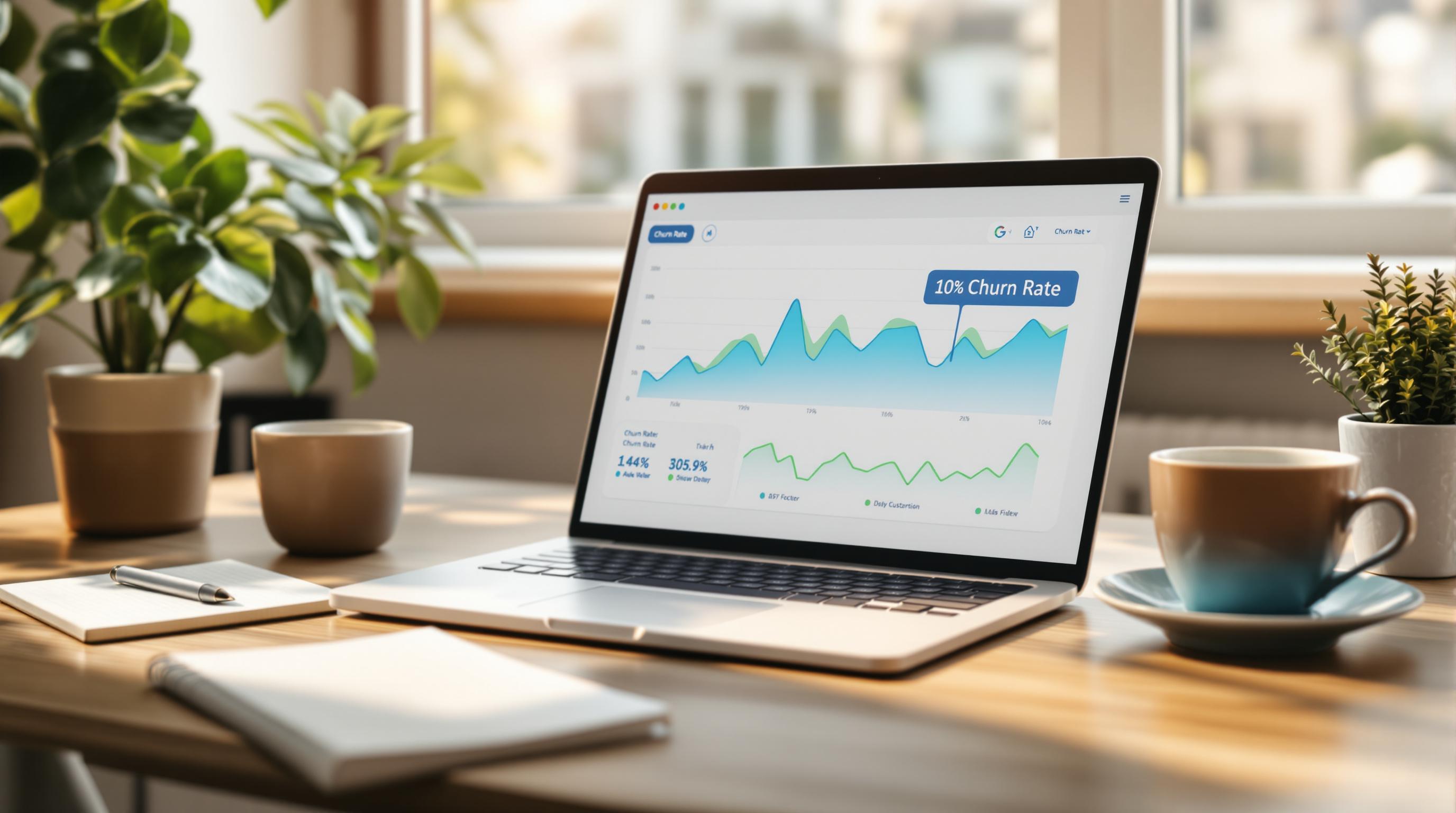Email marketing generates up to $42 for every $1 spent, while cold calling averages $1.80 per $1 spent. If you're deciding between the two, here's a quick breakdown:
- Email Marketing: Scalable, cost-efficient, and great for reaching large audiences. Response rates range from 1–5%, with targeted campaigns hitting 15–25%.
- Cold Calling: More personal and ideal for high-value, complex sales. Response rates average 2%, with better-qualified leads but much higher costs.
Quick Comparison
| Metric | Email Marketing | Cold Calling |
|---|---|---|
| ROI | $36–$42 per $1 spent | $1–$3.50 per $1 spent |
| Cost Per Lead | ~$152.73 | ~$2,777.78 |
| Scalability | High (automation-friendly) | Limited by team size |
| Response Rate | 1–5% (up to 25% targeted) | 2% |
| Best For | Wide audiences, SaaS, e-commerce | B2B, high-ticket sales |
Both methods have their strengths. Email marketing excels in scalability and cost-efficiency, while cold calling is better for relationship-driven industries. Many businesses combine both for maximum results.
Cold Email vs. Cold Calling: Pros and Cons
ROI Measurement Methods
To evaluate these methods, we focus on three main factors: cost efficiency, lead quality, and scalability.
Cost Analysis Per Lead
Understanding the cost per lead highlights key differences between email marketing and cold calling:
| Cost Component | Email Marketing | Cold Calling |
|---|---|---|
| Monthly Total | ~$4,200 | ~$5,000 per rep |
| Leads Generated | 27.5 | 1.8 |
| Cost Per Lead | $152.73 | $2,777.78 |
Lead Quality and Success Rates
Cost alone doesn't tell the full story - lead quality plays a major role in ROI. Here's how the two methods compare:
- Email Marketing: Offers a 21.33% average open rate and a 2.62% click-through rate .
- Cold Calling: While more expensive, it often results in better-qualified leads. Metrics show a 2% conversion to appointment and a 0.3% overall success rate .
Growth Potential and Resources
Email marketing stands out for its ability to scale. For example, one company achieved a 760% revenue increase through segmentation . This scalability directly impacts ROI, with email marketing typically returning $44 for every $1 spent .
Cold calling, on the other hand, faces limits. Scaling requires more staff and infrastructure, which increases costs. Its ROI, at $1.8 per $1 spent , reflects these challenges when compared to email marketing's efficiency.
The contrast is clear: email marketing's scalability and lower costs make it a more effective choice for maximizing ROI.
Cost Analysis: Spending vs Returns
Email Marketing ROI Breakdown
Email marketing offers an impressive return on investment, with studies indicating an average ROI of $36-$42 for every $1 spent . Here's a quick look at the typical monthly expenses involved:
- Software: $20–$1,000
- Content creation: $500–$5,000
- Management: $1,000–$5,000
From a sample campaign, here’s how the numbers stack up:
| Metric | Revenue per 1,000 Contacts |
|---|---|
| Qualified Leads | $15,000 |
| Converted Sales | $39,000 |
Cold Calling ROI Breakdown
Cold calling tends to deliver lower returns, averaging $1-$3.50 ROI per $1 spent . Monthly costs include:
- Salaries: $3,000–$5,000
- Software: $100–$1,000
- Training: $500–$2,000
For a 1,000-call campaign, the outcomes typically look like this:
| Metric | Revenue per 1,000 Contacts |
|---|---|
| Qualified Leads | $3,500 |
| Converted Sales | $7,500 |
Cost and Return Comparison
Here’s a direct comparison of costs between email marketing and cold calling:
| Metric | Email Marketing | Cold Calling |
|---|---|---|
| Cost per Contact | $0.005-$0.05 | $5-$25 |
The gap widens as campaigns scale, which you’ll see in the Growth Potential section. However, there are exceptions: industries like software, where complex solutions are sold, can see 40-50% higher cold calling ROI . This aligns with the idea that direct outreach works well in relationship-driven sectors.
sbb-itb-9cd970b
Performance Metrics Comparison
Performance metrics highlight key differences in how email marketing and cold calling engage audiences and deliver results.
Email Campaign Results
Email marketing typically sees an average open rate of 21.33% and a click-through rate (CTR) of 2.62% . With proper optimization, conversion rates can climb to 25% . For cold emails specifically, optimized campaigns can reach 55% open rates and 30% response rates .
Cold Calling Results
Cold calling often faces scalability hurdles, with success rates ranging between 0.3% and 2% . For every 1,000 calls, key metrics include:
- 150-200 decision-maker contacts (a 15-20% contact rate) .
- Following up five times can increase success rates by 70% , helping to mitigate low initial returns.
ROI Impact Comparison Chart
The differences in efficiency become especially clear when scaling efforts:
| Performance Metric | Email Marketing | Cold Calling |
|---|---|---|
| Initial Response Rate | 7% | 15-20% |
| Final Conversion Rate | 40% of qualified leads | 50% of meetings |
| Time Investment | 2-4 hours/week maintenance | 6.25 hours per appointment |
Growth Potential and Tools
Scalability plays a big role in determining ROI. Email marketing leverages automation to handle large volumes efficiently, while cold calling faces limitations tied to human effort.
Email Marketing Scale Options
Automation is the game-changer for email marketing. Tools powered by AI can tailor content and send times, while predictive analytics help focus on the most promising leads. According to Omnisend, automated campaigns can achieve the same results as manual efforts with 98% fewer sends .
Cold Calling Scale Limits
Cold calling, on the other hand, hits a wall due to its reliance on people. Adding more reps costs around $5,000 per month, and success rates tend to drop as outreach scales up. This limitation contributes to the ROI gap: email marketing delivers $44 for every $1 spent, compared to cold calling’s $1.80.
Some technology can help reduce cold calling costs:
- Local presence dialing boosts connection rates by up to 400% .
- Conversation analytics can improve rep performance by 30% .
Combined Method Benefits
Using both email and cold calling together can amplify results. Leads that receive a mix of emails and calls are shown to convert 16% faster than those approached through just one channel . This approach addresses cold calling’s low success rates (0.3–2%) by using email data to focus only on engaged prospects.
The ability to scale efficiently with email explains why it achieves 24x higher ROI than cold calling, as noted earlier. Combining the two methods ensures better targeting, with follow-ups driven by email engagement data, making the overall process much more effective.
Conclusion: Making the Right Choice
Summary of Findings
The ROI comparison highlights the strengths of each approach depending on the business setting:
Email marketing stands out with an ROI of $36-$42 per $1 spent , offering scalability without limits. On the other hand, cold calling generates higher-cost leads ($2,777 per lead ) but works well for building strong, relationship-driven sales connections.
The metrics tell a clear story. Email marketing typically sees response rates of 1-5%, with highly targeted campaigns reaching as high as 25% . Cold calling, while maintaining a steady 2% conversion rate , often results in leads that are more engaged and ready to commit.
| Metric | Email Marketing | Cold Calling | Best Suited For |
|---|---|---|---|
| Monthly Cost | ~$4,200 | ~$5,000 | Budget-conscious businesses |
| Time to Results | Weeks-scale | Real-time | Quick feedback needs |
| Lead Quality | Medium-High | Very High | Enterprise sales teams |
| Scalability | Unlimited | Limited by staff | Growth-focused strategies |
The key takeaway: Match your choice to what drives ROI for your business - whether that's cost-efficiency, scalability, or lead quality.
Decision Guidelines
Your best option depends on your business goals and priorities:
Email marketing is ideal for:
- SaaS companies and e-commerce businesses that need to reach a wide audience.
- Teams focused on growth with tighter budgets.
- Products or services that benefit from visual demonstrations.
Cold calling works better for:
- Complex B2B sales requiring in-depth conversations.
- High-ticket items or services priced at $10,000 or more.
- Industries where personal relationships are key to decision-making.
- Markets with strict regulations around email outreach.
FAQs
What is the success rate of cold calls vs. cold emails?
Cold emails and cold calls work differently when it comes to metrics. On average, it takes about 8 attempts to connect with prospects through cold emails, with success rates ranging from 0.3% to 2% . These figures align with findings from our Performance Metrics Comparison.
What is the conversion rate for cold calling vs. cold email?
Conversion rates directly influence overall ROI, as outlined in our cost-benefit analysis:
| Metric | Cold Email | Cold Calling |
|---|---|---|
| Avg. Success Rate | 1-5% | 0.3-2% |
| Top Performers | 25% response rate | 40-50% ROI per dollar spent (B2B) |
| Conversion Rate | 1.5 meetings per 100 emails (1.55%) | 0.08 meetings per 100 calls (0.08%) |
Cold email campaigns generate about 1.5 meetings per 100 emails, translating to a 1.55% conversion rate . On the other hand, cold calling has a lower conversion rate of approximately 0.08 meetings per 100 calls (0.08%) . Despite this, cold calls often lead to more qualified, sales-ready leads, which can balance out the lower conversion numbers.



